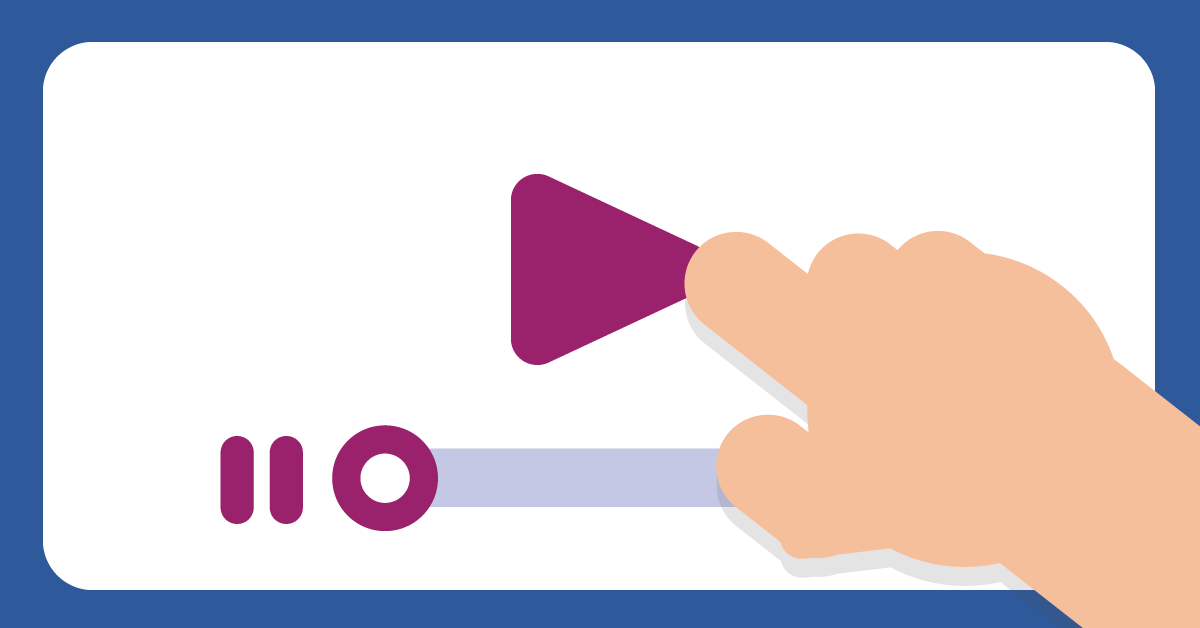Types of Video Marketing Every Business Needs To Know

Video has become a marketing necessity for many businesses. A decade ago, video was an up-and-coming tactic – now it’s a staple in many marketing strategies. Video is everywhere. Think about the features social media platforms Facebook and Instagram introduced recently – reels and highlight videos. Rising app TikTok is 100% video based. This isn’t a coincidence. People are watching more video online than ever before, with the amount of online video watched almost doubling since 2018.
Grabbing consumers’ attention is harder than ever these days, and nothing is more eye-catching than a good video. For some businesses, vidieo marketing may seem daunting. However, adding video to your marketing strategy is not as difficult as it seems. Today we’ll go over the state of video marketing and some common video advertising options you have.
The state of video marketing
These days, marketers are embracing video more than ever. In 2020, 85% of brands used video marketing. If you’re not in this group, you could fall behind the competition. Although video isn’t the perfect fit for every business, there are more video advertising options than you think. We’ll go over some of the most popular video placements below:
Powerful types of video marketing ads everyone should know
Video marketing on YouTube
YouTube is the most visited video site in the world. Combine the volume of visitors with the power of video, and you’re sure to get a lot of eyes on your brand. YouTube pre-roll ads (also called in-stream video) are powered by the Google Ads platform. These ads run before, during, or after a video. There are three main types of pre-roll ads available.

-
YouTube Bumper
- Bumper ads are short, non-skippable ads up to 6 seconds. Advertisers pay for impressions. Because of the length, they’re best used for reach or awareness campaigns.
-
Skippable
- Skippable video ads allow viewers to skip the ad after 5 seconds. It’s important to hook viewers within the first 5 seconds so they aren’t tempted to skip your message. Advertisers pay per impression, and only pay for the view when users watch past a specific time or the entire ad.
-
Non-Skippable In-Stream
- As the name implies, non-skippable ads must be watched before a video can be viewed. These are 15-20 seconds long. Advertisers pay per impression.
Because YouTube ads are run through Google Ads, advertisers have access to great targeting options. Audiences can be targeted by interests, topics, demographics, location, keywords, and language. The cost depends on your industry and target keywords.
Video marketing on Facebook and Instagram
Like YouTube, both Facebook and Instagram see a ton of traffic – Facebook has 2.7 billion monthly active users worldwide, and Instagram has 1.074 billion. Users come to these platforms expecting to watch and engage with videos. Facebook video posts have an average engagement rate of 6.13%, which is higher than any other type of content on the platform.

Anything that runs longer than 3 seconds is considered a video ad. In general, it’s best to keep videos short (Facebook recommends keeping the length at 15 seconds or less), eye-catching, and designed to be viewed with sound off. Video ads on Facebook and Instagram are managed through Facebook Ads Manager with a few different placement options.
Facebook and Instagram video marketing placements
- In-feed ads look like organic posts and show up in user news feeds.
- In-stream ads play while someone is watching another video. They only show on mobile devices. After 15 seconds, the viewer is given the choice to watch the rest of the ad or return to the original video.
- Story ads are full-screen, vertical ads that appear between organic stories.
- Facebook Video Feed ads display between organic videos on Facebook’s video feed. The video feed opens when a video is clicked from the News Feed.
A major video marketing mistake businesses make is approaching these placements with a one-size-fits-all mindset. Each video placement requires a different aspect ratio, including horizontal, vertical, and square. Our handy Facebook and Instagram cheat sheets give all the specs so your ads are optimized for success. You can choose as many or as few placements as you’d like.
Video marketing on LinkedIn
LinkedIn video ads can be a great option for B2B brands or B2C brands targeting professional consumers. Just like on Facebook and Instagram, videos shine here, earning an average of 3 times the engagement compared to text posts.
Sponsored videos appear directly in the LinkedIn feed. They can range from 3 seconds to 30 minutes. Think about the audience LinkedIn attracts and tailor your videos to appeal to this group.

A video that promotes thought leadership, highlights company culture, or demonstrates new products aligns with the type of content users see when they’re on the platform. It’s recommended to keep videos short and sweet (around 15 seconds long) and designed for sound off (consider adding closed captions).
LinkedIn offers targeting options segmented by job titles, company, industry, seniority, and professional or personal interests. Advertisers can also target specific individuals using their contact information.
Video marketing on OTT and other streaming media
OTT (Over-the-Top), or streaming TV, is any content that is delivered to viewers through a streaming video service, bypassing traditional cable TV. Hulu, HBO Max, Amazon Prime, and Pluto TV are all examples of OTT streaming services. OTT ads can reach users across devices, including computers, phones, smart TVs, and any other device where they access streaming services.
Video ads on OTT are similar to traditional TV commercials. They generally play while a viewer is watching programming and are not always skippable. OTT streaming has increased by 115% in 2021 and is poised to keep growing.
There are many options available for OTT ads, but in general, videos are high quality with great branding and messaging. Most videos run between 15-30 seconds long. Compared to traditional TV, advertisers have more targeting capabilities with OTT. They can hone in on target audiences and place your ad over a show whose audience fits in with your target demographic. Typically, businesses will partner with an agency to purchase OTT video slots to get the most bang for their buck.
Does video marketing fit into your advertising strategy?
It’s well established that video marketing is a standard and isn’t going away anytime soon. Brands are turning to videos to connect with customers, tell their story, and drive awareness. Videos continue to outperform other tactics on social media as people are watching videos online more than ever before. With video, there are a few important things to remember:
- You have choices. Which platforms work best for you? Marketers have learned to navigate different formats and platforms and can lend their expertise to ensure your video ads are optimized and running correctly.
- Videos don’t need to be expensive! With just a smartphone and some creativity, you can produce a video without hiring an entire crew.
- Consider your target audience and platform when creating videos. Consider your target audience and platform when creating videos. What are users doing when they’re browsing LinkedIn? Keep your content aligned with the platform you’re advertising on for better engagement.
- Facebook Video Feed ads display between organic videos on Facebook’s video feed. The video feed opens when a video is clicked from the News Feed.
With the right guidance, ideas, and ad-savvy, you can add video marketing to your toolkit.


